ARTICLE AD BOX

 Reuters
Reuters
Three years ago Sir Keir Starmer seriously considered quitting as Labour leader.
It was 2021 and his party had just lost the Hartlepool by-election to Boris Johnson’s Conservatives.
It was the first time Labour had ever lost the seat. Three short years feel like a political lifetime ago now.
Sir Keir has become only the fifth person in British history to take Labour from opposition to power.
His party has gone from a historic thumping at the general election in 2019 – to victory in 2024.
The Hartlepool result though, is a reminder that Sir Keir’s journey to Downing Street was far from straightforward. In fact, for a long time his life and career were on a very different path.

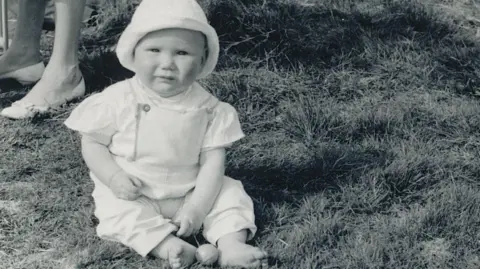 Keir Starmer/Tom Baldwin
Keir Starmer/Tom Baldwin
Baby Keir was born to Labour-supporting parents
Keir Starmer, one of four children, was brought up in the town of Oxted on the Kent-Surrey border.
He was raised by his toolmaker father and nurse mother, who suffered from a debilitating form of arthritis known as Still’s disease.
Sir Keir has spoken about the challenges of growing up at a time of high inflation in the 1970s.
“If you’re working class, you’re scared of debt,” he said during the election campaign.
“My mum and dad were scared of debt, so they would choose the bill that they wouldn’t pay.” The choice was the phone bill.

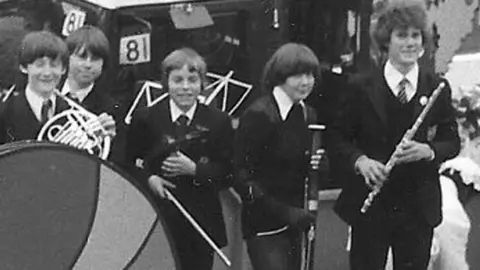 Labour party/PA
Labour party/PA
A young Keir, on the right, excelled at music, playing the flute, piano, violin and recorder
Sir Keir had a lot going on in his younger years.
He was obsessed with football (on the centre-left of midfield, of course). He was a talented musician and learnt violin with Norman Cook, who went on to become chart-topping DJ Fatboy Slim.
Sir Keir also had a rebellious streak. He and his friends were once caught by police illegally selling ice-cream on a French beach to raise cash.
But what about politics? There were always clues, including his name which was given to him as a tribute to the first leader of the Labour Party, Keir Hardie.
Sir Keir dabbled in left-wing politics over the course of his pre-parliamentary life.

 Keir Starmer/Tom Baldwin
Keir Starmer/Tom Baldwin
Sir Keir, pictured lying down, poses with flatmates during his student years in Leeds
That started at school, when he joined the Young Socialists, Labour’s youth movement.
After school, Sir Keir became the first person in his family to go to university, studying law at Leeds University and later at Oxford.
At Leeds, he was influenced by the indie music of the 1980s, from The Smiths and The Wedding Present to Orange Juice and Aztec Camera.
His biographer, Tom Baldwin, notes his favourite drink as a student was a mix of beer and cider - or Snakebite - and he had a taste for curry and chips.
For a while after graduating, Sir Keir lived above a brothel in north London.

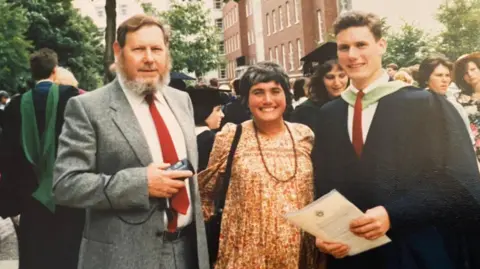 Keir Starmer/Tom Baldwin
Keir Starmer/Tom Baldwin
His parents, Rodney and Josephine, joined him on graduation day at Leeds University
More importantly, he was building a reputation as a workaholic that would see him go on to become a successful and prominent human rights lawyer.
At the same time, Sir Keir continued his left-wing activism, as a prominent contributor to the magazine Socialist Lawyer.
But politics was a side interest and, for much of the next 20 years, his legal career was his focus.
In 2008, he became Director of Public Prosecutions, the chief prosecutor for England and Wales.
Sir Keir likes to talk about this period in life as an example of his dedication to public service, and often recalls his role in prosecuting terrorist gangs. But what else?

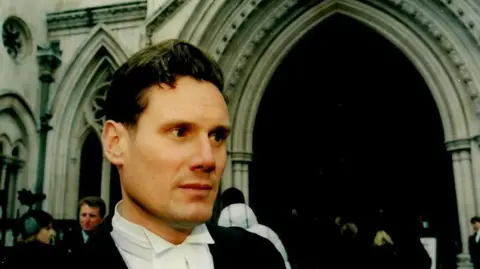 Keir Starmer/Tom Baldwin
Keir Starmer/Tom Baldwin
Sir Keir spent most of his legal career as a defence barrister
Under the 2010-15 coalition government, he had to implement significant cuts, with the Crown Prosecution Service’s budget reduced by more than a quarter.
He also oversaw high-profile decisions including the prosecution of MPs over their parliamentary expenses following the 2009 scandal and prosecuting the then Lib Dem cabinet minister Chris Huhne for asking his wife to take speeding points for him.
Sir Keir's legal work was rewarded with a knighthood in 2014. But how successful was his leadership?
Towards the end of his tenure, Sir Keir admitted in a BBC interview that vulnerable victims were still being let down by the justice system.
A late career change
It wasn't until the age of 52 that the career change came.
Sir Keir was selected for a safe Labour seat in north London, winning comfortably. He and his predecessor Rishi Sunak became MPs on the same day.
But it wasn’t a happy time for the Labour Party.
The Conservatives had just won the general election and a bitter factional battle loomed after Jeremy Corbyn became leader.

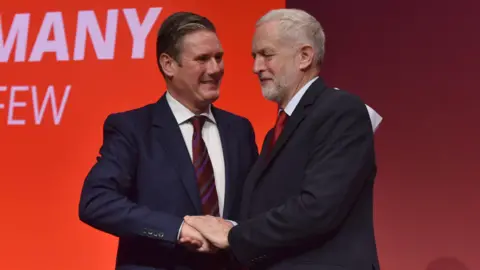
Questions have persisted over Sir Keir's backing of Jeremy Corbyn
Much has been said and written about Sir Keir’s journey from backbencher to the Labour leadership – and now to Downing Street. But some things are worth highlighting.
When he became leader, Jeremy Corbyn made Sir Keir shadow immigration minister but it didn’t last long.
He resigned after less than a year, one of dozens of frontbenchers who quit after the Brexit referendum in an attempt to force Mr Corbyn out.
When that failed, and Mr Corbyn saw off a leadership challenge, Sir Keir returned to the fold as shadow Brexit secretary.
Labour in the doldrums
Sir Keir’s position on Mr Corbyn has evolved over time.
In 2019, he was asked on BBC Breakfast to repeat the sentence “Jeremy Corbyn would make a great prime minister”. He did.
A few months later, he would tell the BBC he was “100%” behind Mr Corbyn and working with him to win a general election.
While others refused to serve under Mr Corbyn, Sir Keir stayed in the tent and helped persuade the leader to back a second Brexit referendum at the 2019 election.
That election was a disaster for Labour. Mr Corbyn quit and Sir Keir won the race to replace him.
But when he took over, a lot of people thought Boris Johnson was destined to govern for some time.
Many saw Sir Keir as a leader who could help rebuild – but few thought he was the man who would take them back to power.

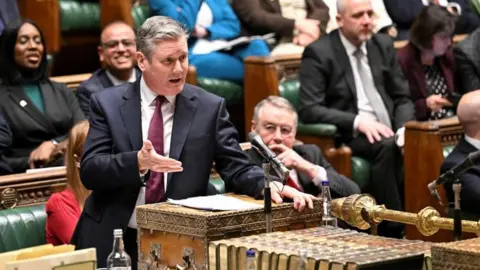 Reuters
Reuters
Sir Keir made big changes to the Labour party during his time in opposition
When did that change? The polls give us a good indication.
Sir Keir’s Labour trailed Mr Johnson’s Conservatives in the polls for much of 2020 and 2021 when the Hartlepool by-election was held.
But that started to change after the first reports of Downing Street parties during the pandemic, when strict restrictions were in place around social gatherings.
There is a clear point in the polls where Labour overtakes the Conservatives in November 2021.
Its lead increased significantly after the Liz Truss mini budget and has been consistent and significant ever since.
A 'ruthless' leader
Sir Keir’s allies argue that wouldn’t have happened without big changes in the Labour Party. Sir Keir has sometimes been ruthless.
Jeremy Corbyn was thrown out of the parliamentary party and ultimately barred from standing as a Labour candidate.
Economic policy was tightened; meaning policies were junked if they weren’t seen as affordable.
Sir Keir embraced British patriotism, using the union jack as a backdrop for speeches and getting his conference to sing God Save the King.
All of that has contributed to Sir Keir’s message of change. He spent the campaign arguing he had changed Labour and could change the country too.

 Keir Starmer/Tom Baldwin
Keir Starmer/Tom Baldwin
Sir Keir and Victoria married in 2007
The election result will also mean change for the Starmer family.
Sir Keir, now 61, married his wife Victoria in 2007. Her intention is to keep working for the NHS in occupational health as he serves as prime minister.
Lady Starmer has been seen at some high-profile events like conference speeches, a rally last week – and at a Taylor Swift gig. But she is unlikely to play as prominent a role in public life as some partners have in the past.
Sir Keir though has been candid about the impact high office could have, particularly on his teenage son and daughter.
He told the BBC in 2021: “I am worried about my children. That is probably the single thing that does keep me awake – as to how we will protect them through this.”
It’s a challenge the Starmers will now face as they move into Downing Street at the end of a testing, far from straightforward, journey.



 9 months ago
44
9 months ago
44
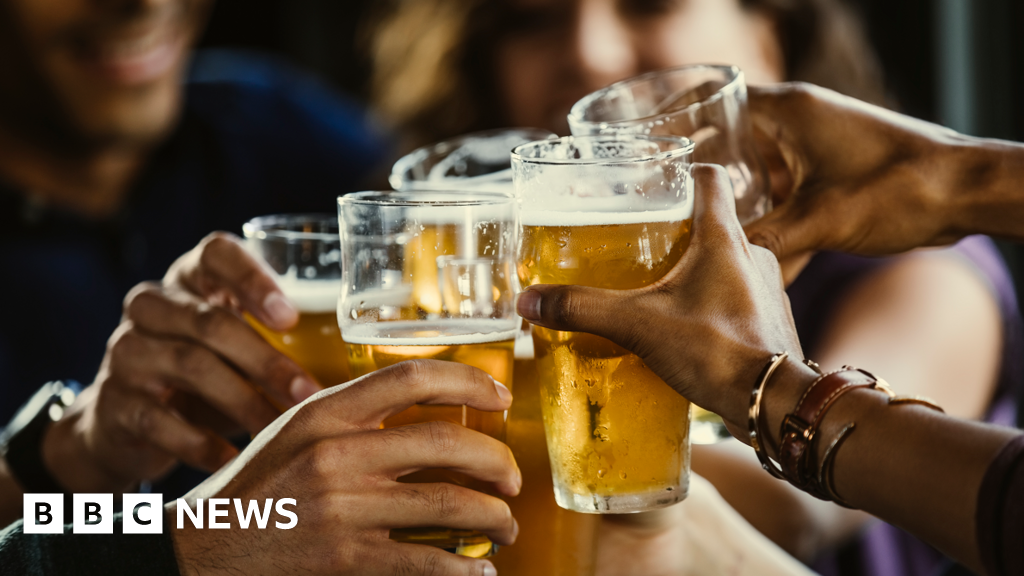
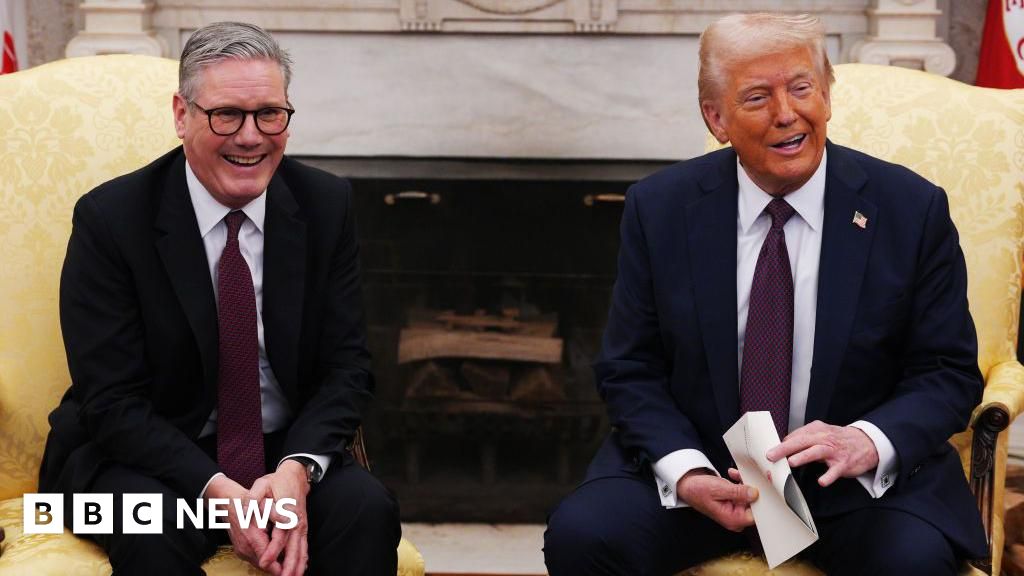
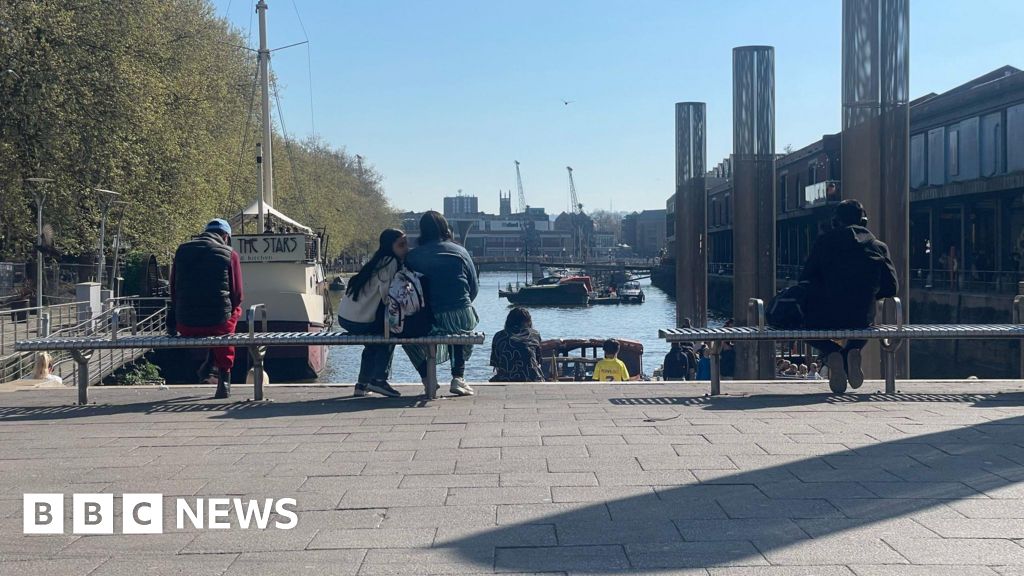





 English (US) ·
English (US) ·